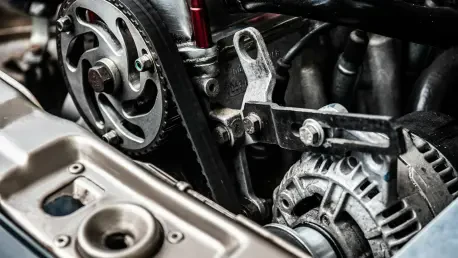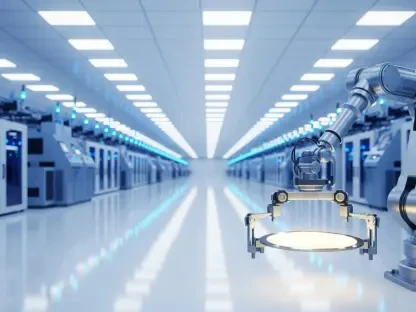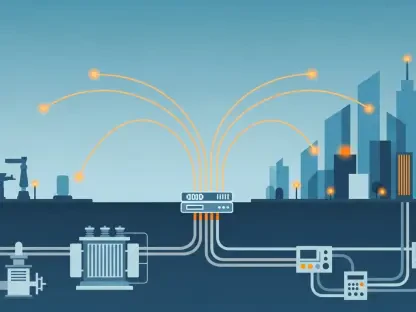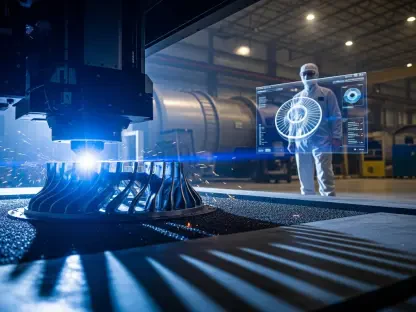In recent years, the inverter duty motor market has experienced a remarkable surge, intimately linked to the upward trajectory of industrial automation and energy efficiency efforts across the globe. With a projected compound annual growth rate (CAGR) of 6.8% until 2037, this sector signifies robust progress in North America, Europe, and the Asia-Pacific regions. At the heart of this industry boom lies the need for motors that can sustain the demanding conditions of various modern technological frameworks, governed by stringent energy efficiency protocols and an ever-expanding push towards automated systems. This evolution of the market is not only a testament to technological advancement but also indicative of a broader transformation across industries, striving to blend operational efficiency with sustainability.
The central role of inverter duty motors in contemporary industry stems from their ability to withstand frequent voltage and frequency variations typical of variable frequency drives (VFDs). This characteristic renders them indispensable within any setting aspiring toward operational excellence and sustainable practices. As industries face mounting pressure to curb energy usage and operational costs, inverter duty motors are emerging as key players within state-of-the-art machinery and next-gen smart factories. With a foundation laid in resilience and adaptability, these motors offer a promising avenue to meet the ever-evolving demands of the industrial landscape.
Driving Forces: Automation and Energy Efficiency
One of the primary accelerators of the inverter duty motor market is the robust demand for industrial automation, observed across a range of sectors like oil and gas, automotive, manufacturing, and food and beverages. Industries are increasingly investing in automation technology to boost productivity, reduce human intervention, and enhance precision—all of which resonate well with the capabilities of inverter duty motors. These motors, due to their robust construction, offer adaptive performance under fluctuating loads, making them highly suitable for automated settings. By supporting such innovations, inverter duty motors enable industries to achieve higher levels of efficiency and output consistency.
Additionally, energy efficiency remains a fundamental driver of demand within this market. Conventional motors often underperform when paired with VFDs, lacking both the efficiency and torque control that are the hallmark of inverter duty designs. As a response to the pressing need for sustainable practices, sectors globally are integrating these motors into their operations. They exhibit reduced heat generation and superior energy conservation, aligning with the goals of cost reduction while also supporting broader environmental commitments. As industries set more ambitious energy goals, the trend toward adopting inverter duty motors becomes even more pronounced.
Emerging alongside these core trends is the advancement of smart grid infrastructures and the integration of renewable energy resources. The adaptability of inverter duty motors makes them ideal for use in renewable systems, such as wind turbines and solar arrays. These systems demand variable speed capabilities and robust output even amidst environments characterized by power fluctuations. The long lifespan, minimal maintenance requirements, and high adaptability of these motors make them a natural fit for renewable applications, enhancing their role within the energy transition narrative and solidifying their position within modern energy solutions.
Technological Advancements and the IIoT
Technologically speaking, the market for inverter duty motors is also witnessing significant developments, especially with the growing incorporation of the Industrial Internet of Things (IIoT). Motors equipped with IIoT capabilities have the potential to transform operational dynamics within industrial settings, offering real-time data transmission that enables predictive maintenance and reduces downtime. As a result, productivity and efficiency experience noticeable improvements. This trend, particularly prominent in European and North American markets, aligns with the growing importance of smart manufacturing and digitalization aimed at optimizing both economic returns and environmental footprints.
Customization is also becoming an increasingly important aspect of the inverter duty motor landscape. Manufacturers are now providing tailored solutions to meet the specific needs of demanding environments. From explosion-proof designs for chemical plants to flameproof options for mining operations, the options are broad and adaptable. Such flexibility underscores the market’s versatility and further expands its reach across diverse industries. This tailoring of products to specific needs not only highlights the technological prospects of inverter duty motors but also broadens the audience it can serve, opening new avenues for their application.
Among the most dynamic sectors contributing to the growth of inverter duty motors is the electric vehicle (EV) industry. EV manufacturing environments, including conveyor systems, robotic arms, and assembly lines, require the precise control and adaptability these motors provide. This aligns with the larger automotive trend steering towards sustainable transportation solutions. As the automotive sector continues to evolve, the synergy between inverter duty motors and EV production processes exemplifies the forward-thinking approach currently defining many industrial fields, encapsulating the tech-driven future shaping today’s markets.
Regional Dynamics: A Global Perspective
Regionally, the inverter duty motor market is vibrant and diverse, with each area contributing distinctly to the global narrative. North America stands at the forefront, driven by substantial manufacturing activity, the swift adoption of cutting-edge technologies, and rigorous energy efficiency regulations. The emphasis on industrial modernization, particularly in the United States, has fueled the demand for high-performance motor systems, ensuring that North America retains its position as a leader in this domain. The ongoing implementation of advanced technologies further solidifies the region’s leading role, setting a benchmark for others to follow.
Europe follows closely, with robust industrial activity and a strong emphasis on energy transitions demanding smart factory solutions. Countries like Germany, France, and the UK are at the forefront of industry reforms, focusing on upgrading outdated machinery to meet European Union emission standards. The modernization efforts witnessed in these countries reflect a broader commitment to achieving sustainability goals, ensuring industry alignment with cultural priorities, and reinforcing the role of inverter duty motors as catalytic agents in Europe’s industrial transformation.
The Asia-Pacific region presents the most promising growth opportunities, with several emerging economies undergoing rapid industrialization and urbanization. Countries such as China, India, and those in Southeast Asia are establishing themselves as manufacturing powerhouses in electronics, automotive, and consumer goods sectors. Governmental programs like “Make in India” and “China Manufacturing 2025” highlight the state-backed initiatives propelling market growth. As these nations continue their infrastructural and industrial expansion, inverter duty motors offer state-of-the-art solutions to meet the rigorous demands of newfound economic capacities.
Challenges and Opportunities
The market is not without its hurdles. One significant challenge is the high upfront cost associated with inverter duty motors compared to more traditional options. This financial barrier can impede adoption, particularly within cost-sensitive sectors or developing regions where traditional motors are both familiar and readily available. The higher initial investment required to transition to inverter duty options can be seen as prohibitive by some industries, causing them to hesitate despite the longer-term efficiencies and savings they potentially offer.
Despite cost concerns, the technical complexities surrounding inverter duty motors contribute to further complications. Compatibility with specific VFDs and precise installation requirements to avoid issues like harmonic distortion add layers of complexity. When improperly managed, these factors can lead to premature motor failure, reducing appeal and usage among personnel who may lack the specialized skill set to handle such advanced technologies. These challenges may slow adoption rates and necessitate targeted education and training programs to build user confidence.
While the COVID-19 pandemic exacerbated supply chain disruptions, affecting the production and distribution of inverter duty motors, the market is steadily recovering. Residual effects, however, continue to impact the availability of raw materials and logistics, contributing to longer lead times and fluctuating costs. Navigating these disruptions requires agility and innovation, as companies rethink traditional practices and implement new strategies to maintain growth within an evolving market context.
Nonetheless, the opportunities in the inverter duty motor market remain significant, particularly in the renewable energy sector. The global push toward achieving net-zero emissions and adopting clean energy technologies increases demand for reliable, variable-speed motors essential in supporting wind and solar energy systems. Additionally, the ongoing digitization and industrial shift towards Industry 4.0 promise further advancement for intelligent, feedback-capable motors, which play a crucial role in predictive maintenance and process optimization—a clear advantage as industries evolve into more sophisticated ecosystems.
Future Outlook and Considerations
A key driver of the inverter duty motor market is the rising demand for industrial automation across sectors such as oil and gas, automotive, manufacturing, and food and beverages. Companies are heavily investing in automation to increase productivity, limit human involvement, and improve accuracy—benefits that align with the capabilities of inverter duty motors. These motors are built to withstand varying loads, making them ideal for automated environments. They help industries achieve higher efficiency and consistent outputs by supporting innovative processes.
Energy efficiency is another crucial factor fueling the demand for these motors. Traditional motors often fall short with VFDs, lacking the efficiency and torque control that inverter duty motors provide. In light of the growing need for sustainable practices, industries worldwide are adopting these motors, which generate less heat and conserve energy. This shift aligns with cost-reduction goals while meeting broader environmental commitments. As industries set more ambitious energy targets, the move toward inverter duty motors becomes more evident.
In addition, the emergence of smart grid infrastructures and the integration of renewable energy resources play a significant role in this market. Inverter duty motors are particularly suited for renewable systems like wind turbines and solar panels due to their variable speed capabilities and strong performance even during power fluctuations. Their long lifespan, low maintenance needs, and adaptability make them a natural choice for renewable energy applications, reinforcing their place in the energy transition and modern energy solutions.









